Can modern physics dialogue with the theological and mystical tradition to shed light on the ancient question of angels? This is the question on which "The physics of angels" is based, a text-dialogue between the rebel theologian Matthew Fox, and the biologist Rupert Sheldrake, known for the theory of morphic resonance, focused on the analysis of some of the most illuminating texts of three Christian mystics: Dionigi Aeropagita, Saint Thomas Aquinas and Hildegard of Bingen.
di Marco Maculotti
originally published on Il Corriere Metapolitico - Eschatological Journal of Universal Studies, n. 9/2019, p. 80-87
cover: John Martin, "Paradise Lost: Satan Viewing the Ascent to Heaven", 1824, mezzotint
Can modern physics dialogue with the theological and mystical tradition to shed light on the ancient question of angels? This is the question on which it is based The physics of angels (Editions Tlon, Rome 2016), text-dialogue between the "rebel theologian" Matthew Fox, and the biologist Rupert Sheldrake, known for the theory of morphic resonance, focused on the analysis of some of the most illuminating texts of three Christian mystics: Dionigi Aeropagita, Saint Thomas Aquinas and Hildegard of Bingen. Ranging from ancient shamanic cultures to the most recent discoveries in physics, the two authors aim to frame and define the angelic powers from a perspective that can be considered valid at any time and in any place, taking into account both sacred traditions and contemporary scientific ones. .
In Fox's opinion, the absence of angels in the modern (post-medieval) world was determined by what he defines "The crisis of prayer in the Western world" (p. 28). But Sheldrake notes as, if following the scientific revolution of the XNUMXth century and the ensuing mechanization of the universe the angels were completely ousted from any kind of scientifically acceptable theory, something changed with the discoveries of physics of the last century, and in particular with the birth of quantum theory and with the idea of an expanding universe, evolutionary: no longer considered solely as a mechanism, but also as a living organism, which is perpetually developed on several levels.
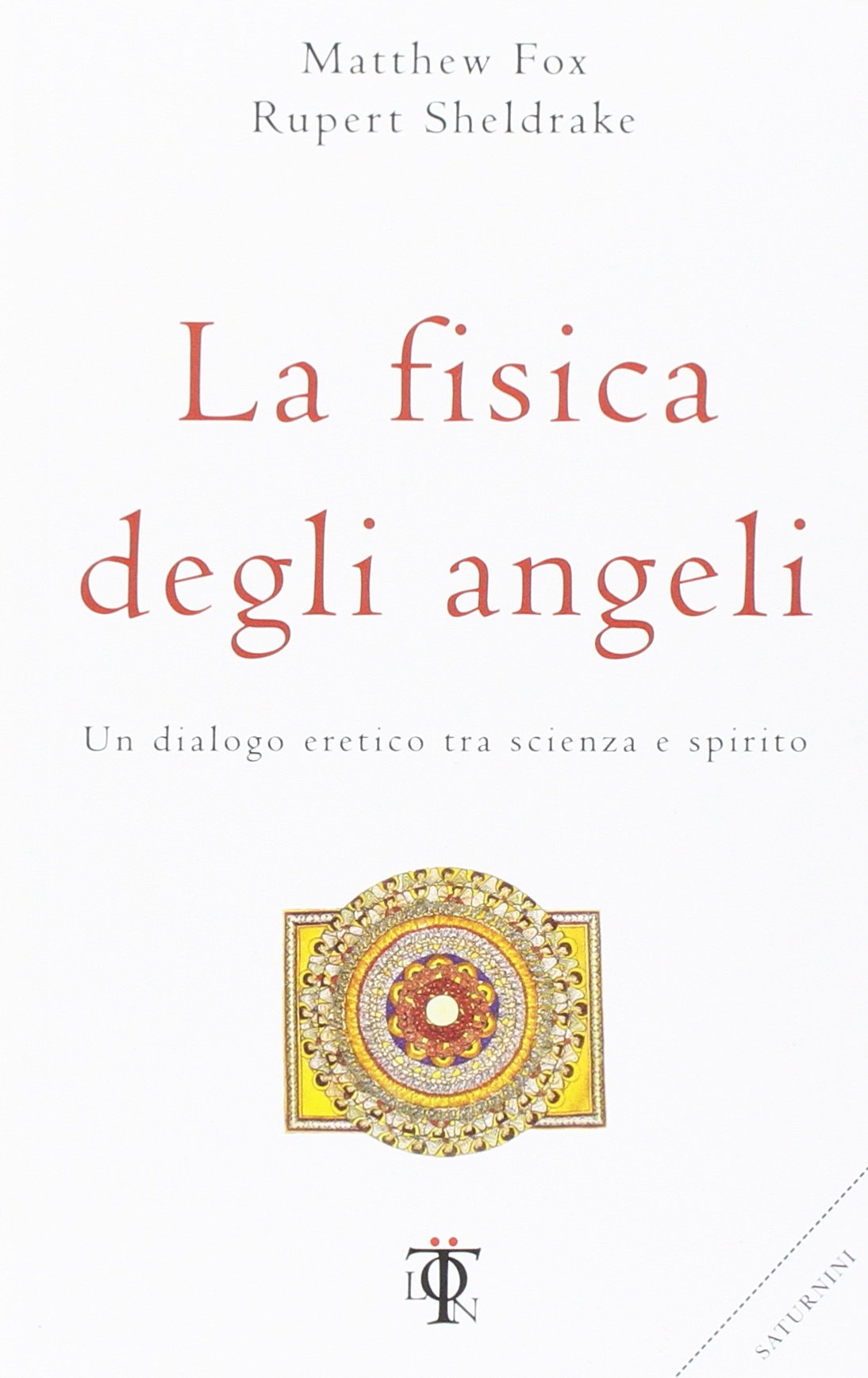
Karl Popper himself ruled that "through modern physics materialism has transcended itself"; and Sheldrake, who quotes it, glosses by noting that "Matter is no longer the fundamental explanatory principle, but is itself explained in terms of further principles, namely energy and fields" (p. 32). "Instead of the idea of a nature fully understood in terms of mathematical physics, it turned out that 96% of matter and energy in the cosmos is "Dark matter" and "dark energy", entirely unknown. It is as if physicists have discovered the cosmic unconscious"(P. 33).
Pulling the strings from his note theory of the "morphic field", an organizing field that would underlie the entire cosmic structure, Sheldrake believes that energy and matter act according to a certain "Intrinsic memory" (p. 34), which is why the creation on the different levels of which the cosmos is formed would develop according to certain ones pattern observable everywhere. Just these pattern or morphic fields that regulate the shaping of cosmic energy and matter in the various forms they could be defined, from a scientific point of view, as the "angelic powers" acting in the Universe, regulating the various levels according to an "intrinsic memory" by which they are guided. On the other hand, Sheldrake notes, «their traditional role is that of being connectors, messengers. The term angelo comes from the Greek angelos which means messenger. It is something that connects, and linking is what [morphic] fields do "(p. 68). And again (p. 86):
« Angels are connectors, managers, messengers who touch and connect the microcosm, the human being, and integrate us with the spheres of cosmic forces. "
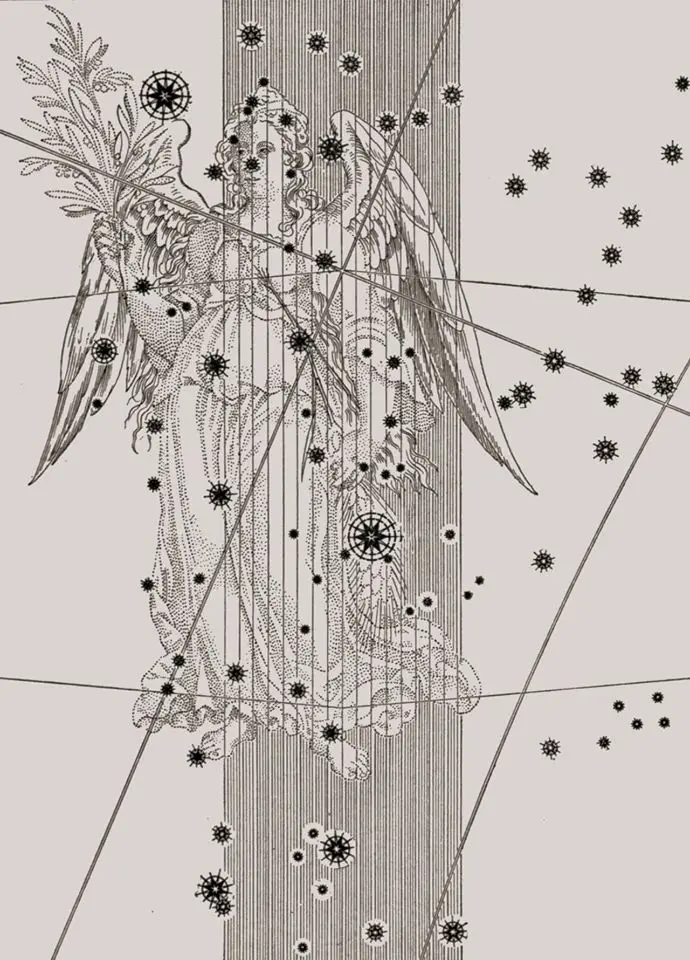
Consequently, commenting on Thomas Aquinas, Sheldrake hypothesizes that "the angels interact in some way with the organizing fields of things. The mental activity of a person, the development of a plant, the formation of a snowflake, the whole activity of Gaia - everything is organized by the camps. Even atoms and galaxies"(P. 157). It would be nothing more than what modern science, which "is based on the idea that the Universe is governed by invisible principles", defines laws of nature (pp. 116-7):
«[…] Essentially intellectual, because mathematical equations exist only in the mind. […] These are all invisible governing principles. But they are conceived in an extremely limited and sterile sense, more as abstract mathematical equations than as living thoughts with creative power. "
Particularly important are the correspondences drawn by the two authors between the so-called Big Bang that caused the birth of the Universe and the cosmogonies of the three mystics analyzed in the dialogue. Sheldrake notes how the principles of thermodynamics show 'that all forms of energy can be transformed into others, and that at the heart of things is energy. The most visible form of energy is fire, but energy is hidden in all things. The primordial source of all this energy, according to modern cosmology, is the original fireball from which the Universe was born "(p. 99). But, adds Fox, “with the expansion and cooling of the Universe, there was what is called separation of matter and radiation, the separation of matter from light. […] The differentiation of light from darkness is preceded by a state that transcends both, a kind of fire beyond light and dark"(P. 122).
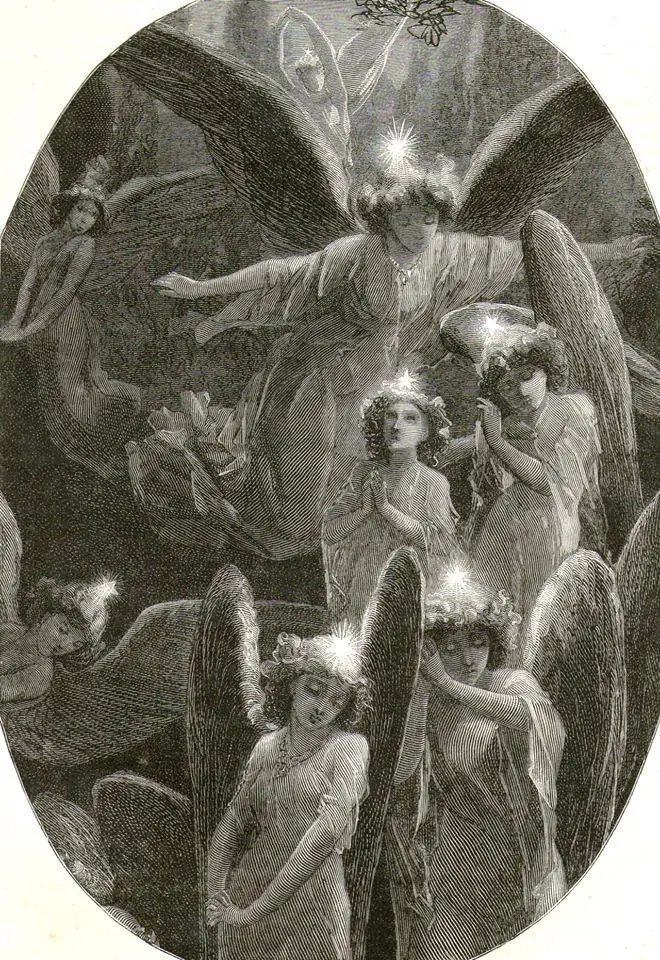
All of this seems to appeal the visions of Hildegard of Bingen, who wrote: "The primeval fire from which angels live and burn is God himself. This fire is all glory from which the mystery of mysteries comes"(P. 188). "The so-called cosmic background radiation is believed to be the residual light produced by the Big Bang," says Sheldrake. "These photons are among the oldest things possible, but they have not worn out because they are timeless" (p. 152).
Commenting on the cosmic prayer by Hildegard ("The whole cosmos intones the song of angels", p. 191), Sheldrake notes how the images described by the saint are "images in motion" (p. 192):
“In this prayer there is a backward movement towards God, perhaps a mirroring. Energy moves out of God through angels; And the movement of returning to God, which has the form of prayer, is vibratory, dynamic and meaningful, profound. "
Prayer is therefore understood as vibration, in the same way that modern physics interprets the whole of nature as vibratory, rhythmic and oscillatory, "even in the heart of atoms". Fox, for his part, emphasizes the perspective pantheistic of this way of understanding God (p. 193):
“It's not about individual voices; there is a cosmic vibration, a cosmic chant, of the cosmic waves: prayer. As our eyes catch only a limited amount of light, our ears can only hear a small part of the singing. And of the fire, and of the wind. The secret word hidden in things offers constant and universal prayer to God »
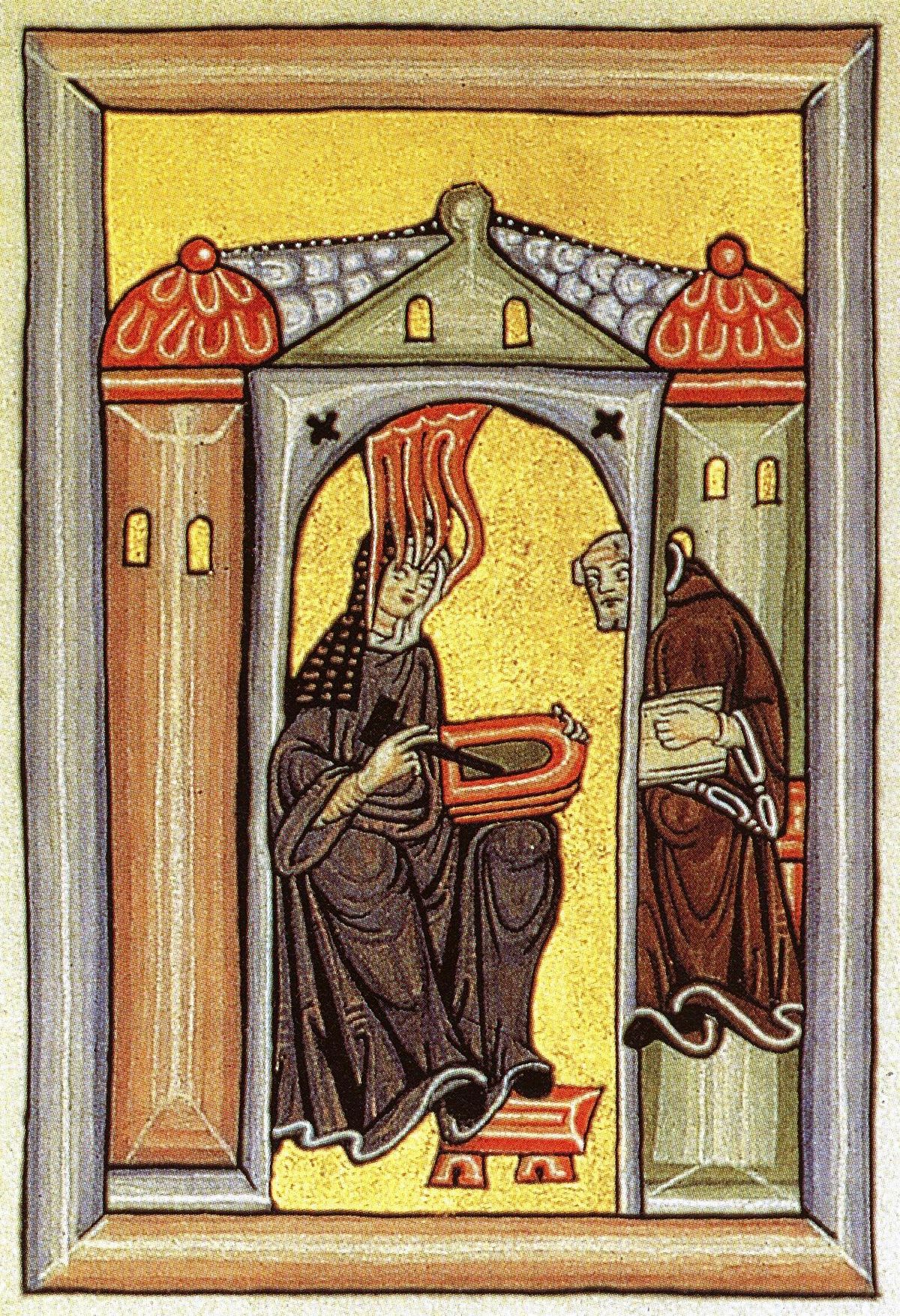
It is these observations that do not differ much from the "Mythopoiesis of sound" and by "Sonorous cosmogonies" of Marius Schneider (Cfr. Primitive music), a German musicologist who considered the Verb (or the Sound, or the Word) and the vibratory aspect linked to it as the divinity itself, in perpetual action within the Cosmos, sinceillo tempore of the Origins. “In the modern age,” Fox observes, “we have managed to anthropocentrizing the word "word". But in reality, the "word" is much more original, and reconsidering it as a vibration helps us to deantropocentrize divinity"(P. 194). Interpreting the divine powers in the same way as this Word / Vibration which, spreading through the various levels of the Cosmos, permeates, creates and molds it, to Fox it is more explainable the mathematical order on which the entire Universe is founded.
The idea of a "Nested hierarchy" (holarchy) in which the angelic powers are arranged, on the other hand, it also clearly emerges in the visions of Hildegard (pp. 200-1):
“And then the almighty God ordered the celestial militia into different orders […] each of these is destined to be the mirror of the other's seal. In every reflection there are hidden mysteries that not even the angelic orders can understand, know, perceive or bring them to fruition in their entirety. For this reason they wait in wonder and ascend from praise to praise, continually renewing themselves; their prayer of praise will not end never. "
This doctrine, which goes hand in hand withimage of God as a wheel, highlights the interdependence between the various cosmic and angelic levels ("The part needs the whole and the whole of the part", Fox glosses) and also inserts the angels in the fullness of Creation, and not as ontologically separated from it: they "seem to follow the same patterns of interconnection that regulate the rest of nature" (p. 201).

Sheldrake and Fox go further, catching a glimpse of the vision of Hell of the mystical modern ideas such as those of black hole and antimatter. «I have left the North empty», Hildegard writes, reporting God's message, «here neither the Sun nor the Moon shine. Therefore, in this place, far from all worldly structures, there is hell, which has no roof and no floor. Here pure darkness reigns, but at the same time it is at the service of all lights of my fame ". As Fox points out, the saint «honors the positive role of darkness; speaks of it asuterus, connects it to the gestation, which is a time of darkness, doubt and expectation ", highlighting the fact that the uterus is to be understood as" a place of positive fecundity, despite being dark "(p. 206). On the other hand, in ancient and pre-Christian traditions, the equivalent of Christian Hell was the "World below" or the afterlife: think of the Greek Hades, the Hebrew Sheol, the Bardo del Tibetan Book of the Dead, or even to the kingdom of Sidhe in Gaelic folklore; all dark, fluid, semi-material worlds, in which forms interact constantly changing, and where the souls of the departed dwell, waiting to be reincarnated again in our sublunar plane of existence.
And if the North is said to be, in Hildegard's revelations, the kingdom of darkness, it is not surprising that it is precisely in the extreme North that the Throne of Lucifer (the Polar Star?), the first angel, in which God "impressed all the beauty of the works of his omnipotence", decorating it "like the sky and like a whole world", giving it "all the stars, the beauty of the vegetation and every kind of sparkling stone '. In the end, "he called him Lucifer, bearer of light, to spread his light, which is eternal"(Pp. 206-7). Sheldrake comments on this and other passages on the prince of rebel angels pointing out how his Fall "occurs at the very beginning of creation, long before the rest of the Universe takes shape", and comes to the conclusion that "separation therefore has always existed", perhaps being "in the nature of things":
As the formation of light implies that of darkness, the formation of consciousness, and the exercise of free will, must involve the possibility of a denial of its source. "

Finding the origin of consciousness "in the consciousness of Lucifer, the first and most splendid of the angels", it follows that the very denial of the original source is to be attributed as original sin to the man himself, to the point that Fox considers "The sin of Lucifer, as described by Hildegard, the vanguard of human perversion" (p. 208). Hildegard further states that Lucifer "separated from the love of God and went into darkness" and then, as Sheldrake says, "began to speak to himself. The movement towards darkness allows a differentiation of consciousness, an interior dialogue". In this, as a consequence of the detachment from the "nested hierarchy, from the interdependent relationship between God and the rest of creation", he sees the forerunner of what he calls "The autism of the modern world", that is to say what Thomas Berry defines "our talking to ourselves": "all this", comments Sheldrake, "seems to be the replica of Lucifer's autism and solipsism" (pp. 210-1).
But the speculations go much further, because in the revelations of Hildegard Lucifer rises to cosmic consciousness itself that, detaching himself from his Original Source in illo tempore, gives life progressively, falling deeper and deeper into the rounds of matter, to the plane of universal manifestation. Lucifer (p. 212):
«[…] He reached out eagerly towards evil, which sucked him into the abyss. Thus, for him the eternal majesty was extinguished, and he fell into infinite corruption. The remaining stars turned black as extinguished embers. With their seducer, they were stripped of their majestic splendor. They went out in gloomy perdition, deprived of all the light of bliss, just like embers without the spark of fire. "

in these black stars, Sheldrake also identifies a correspondence with black holes, remnants of stars that have collapsed into themselves, able to suck anything into itself; for this, he is particularly struck by the image of the saint describing Lucifer and the fallen angels as "being whirled towards darkness" through a vortex, which could even be seen as a vortex space-time, to the point that Hildegard writes that God "snatched them away from the South and from the good, and pulled them away back in time"(Pp. 212-3, italics ours). "As far as we know," says Sheldrake, "once something falls into a black hole it ceases to exist. This is a graphic image of perdition, of total loss, much stronger than the antiquated one of hell"(P. 213). Fox, for his part, observes how «this language [is] apocalyptic; cosmological events have psychological and moral implications. Hildegard brings together psyche and cosmos "(p. 214).
It is therefore not surprising how in Hildegard's cosmogony humanity is to be framed as substitute of fallen angels. In fact, he writes the mystic (p. 215):
“At that time God formed another form of life. He sank this life into the bodies and elevated them. These are the humans. Now God gives them the place and honors of the lost angels, so that they can complete the prayer that others did not want to perform. [...] The human being, therefore, is the perfect "tenth", the tenth choir that completes everything through the power of God. [God said:] "I gave the splendor that the first angel refused to humans - to Adam and his race". "
Nor should we overlook, with regard to the "tenth choir", the fact that Hildegard, in the same way as the Pythagoreans, considered ten as a "golden number", a symbol of cosmic perfection.
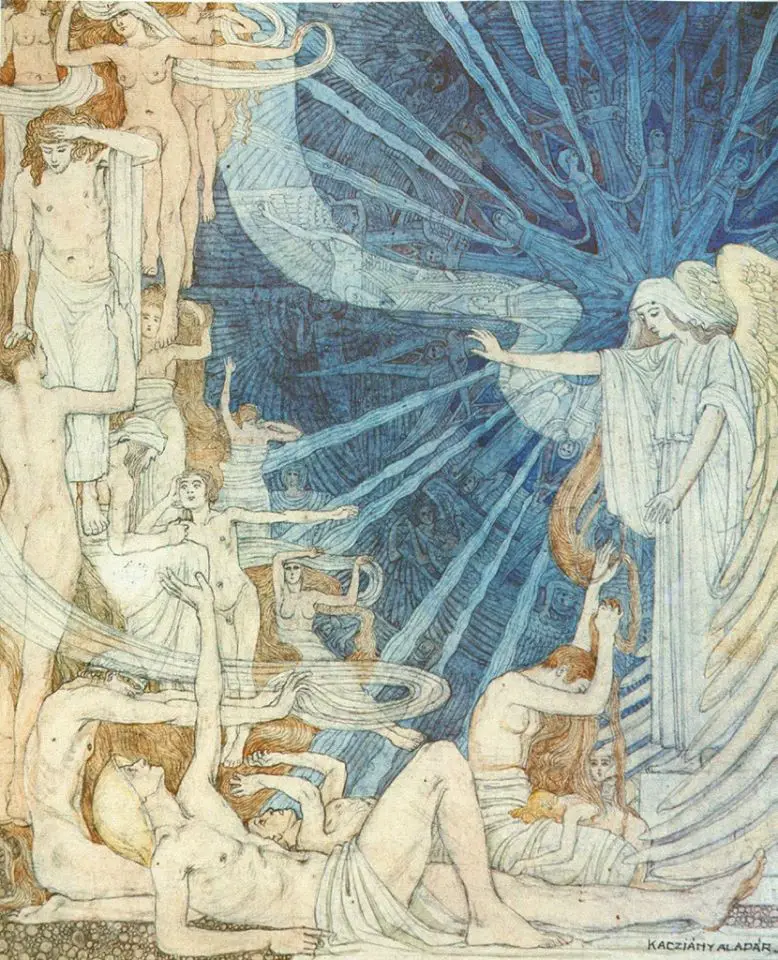
Regarding the question of fallen angels and that of the birth of human consciousness, Sheldrake wonders if it was not communication with angelic intelligences that gave rise to the latter. To justify this hypothesis, he refers to shamanic traditions from all over the world, underlining how "all myths speak of the eruption of a creative power that comes from another dimension, from the realm of spirits. [...] the role of these non-human beings is so universal in myths that it suggests to me that, in the evolution of consciousness, there have been a series of creative leaps that involved contacts with angelic intelligences "(p. 219) - about this also citing the hypotheses of his friend Terence mckenna (Cfr. The Archaic Revival and the "trialogue", written together with Sheldrake himself and Ralph Abraham, The evolutionary mind).
"These are deep archetypes," continues Sheldrake. “In the modern world, they played their part mainly in science fiction dimension, and when someone has experienced otherness, he has encountered it precisely in the guise of such stories [UFO phenomenon]. In the Middle Ages there was no science fiction, but a well-developed angelology. With the disappearance of the belief in angels and with the secularization of the cosmos, these archetypes have largely remained, but reinterpreted in a science fiction key: no longer wings, but spaceships that ply the skies "(p. 234). "Both our image of the cosmos and our image of the angels", Fox agrees,"have been mechanized"; and Sheldrake remarks bitterly: "a Universe sterilized against spirits"(P. 237).
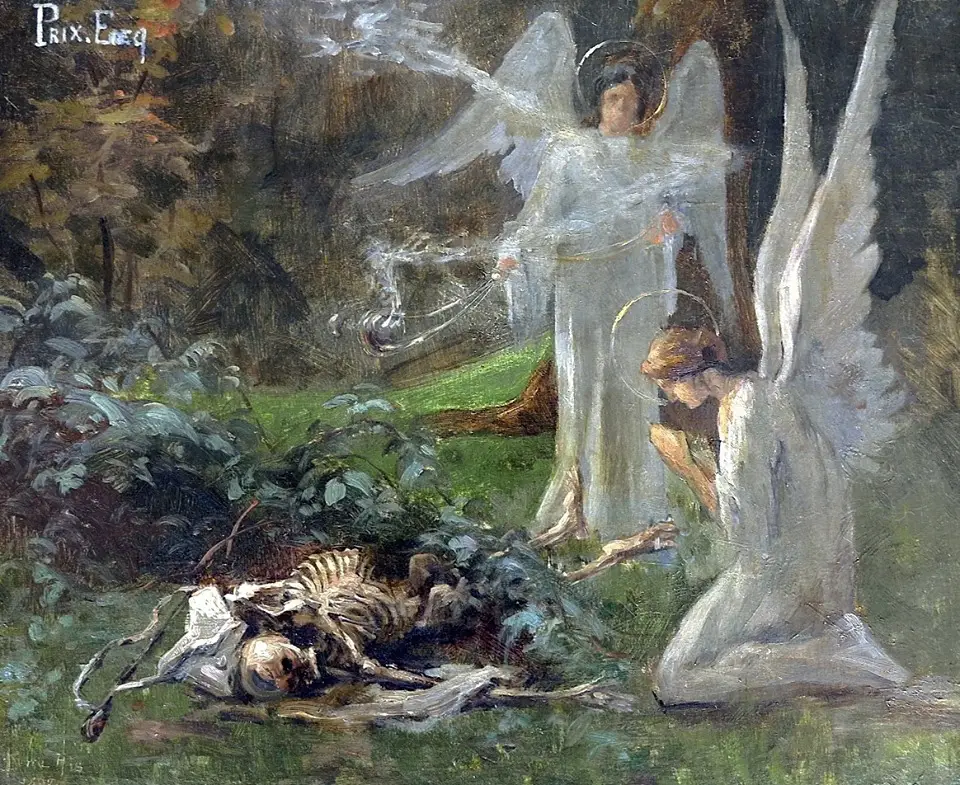

4 comments on ““The physics of angels”: dialogue between a visionary biologist and a rebellious theologian"